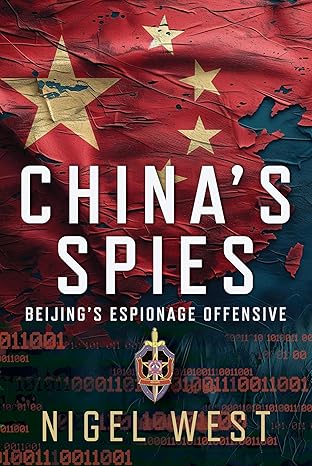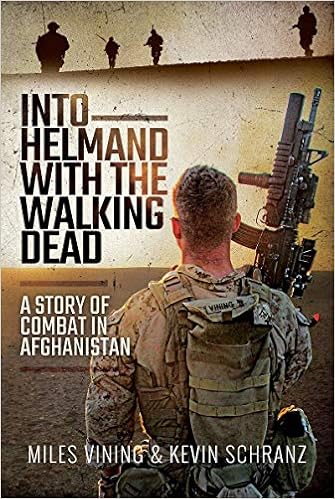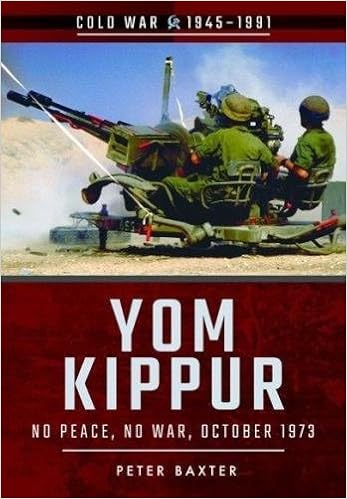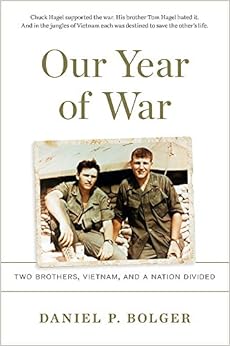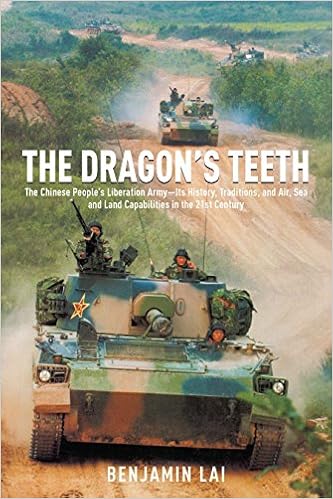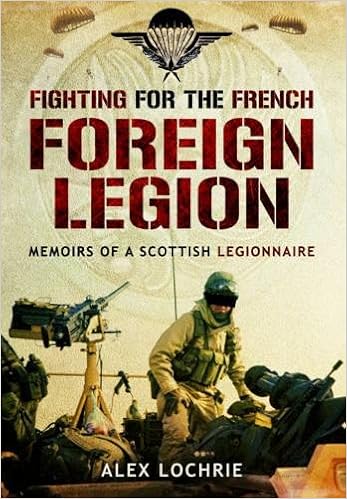Operation Deliberate Force: NATO’s Air Campaign ends the Bosnian War
By Alexandros Boufesis
The Yugoslav civil war was the eruption of decades of inherent hatred between the ethnic groups that formed up ex-Yugoslavia, the most prominent of which being the people of Serbia, Bosnia and Herzegovina, Montenegro, Croatia, Slovenia and Macedonia. In March 1992, Bosnia and Herzegovina (BiH) declared its independence via a referendum, which was held in February, and it would be internationally recognized in April. The siege of Sarajevo, on April 5, 1992, by the armed forces of the newly formed Republika Srpska (VRS), under General Ratko Mladic, along with the overrun of Srebrenica and Zepa (July 1995), would mark an all-time low for the International Community. It is of pivotal significance that the UN had marked Sarajevo, Žepa, Goražde, Tuzla and Bihać, as “safe areas” via the UN Security Council resolutions 819 and 824.[1] Those pockets, along with the UN troops that were defending them, had either been overrun or under siege, while NATO aircraft and naval vessels were imposing “Operation Deny Flight”, allegedly holding the Bosnian Serbs in check.
Mastering the Correlation of Forces: A Practical Approach for Senior Leaders
By SGM Antonio V. M. Pires, SGM Fabio Lusiani, & Mr. Robert Shawlinski
In today’s complex operational environments, military planning demands both critical judgment and analytical rigor. Within the military decision-making process (MDMP), during Step 3—Course of Action (COA) Development—planners conduct the sub-step Assess Relative Combat Power, which involves evaluating the relative strength, capability, and effectiveness of friendly and enemy forces (Department of the Army [DA], 2024). The doctrine recognizes this assessment as an essential start point; however, a more comprehensive evaluation can be achieved through an analysis known as the Correlation of Forces (CoF).
Zbigniew Brzezinski - Patient Zero: Historical Underpinnings of the Ukraine Conflict
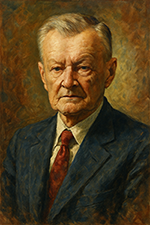 By LtCol Richard Beil USMC(Ret)
By LtCol Richard Beil USMC(Ret)
In the field of epidemiology, the term “patient zero” refers to the person identified as the first carrier of a communicable disease in an outbreak of related cases. The term can also be used in non-medical fields to describe the first individual affected by something negative that then propagated to others, such as the first user on a network infected by malware. Although certainly not the first, or only, Cold Warrior who exhibited both a fear and hatred of Russia (then the Soviet Union), this paper will demonstrate that, following the collapse of the Soviet Union in 1991, the most strident anti-Russian voice in the U.S. foreign policy establishment was Jimmy Carter’s former National Security Advisor Zbigniew Brzezinski. It was Brzezinski’s voice, even louder than that of Henry Kissinger, which set the United States on the path to the current conflict in Ukraine.
Army Design Methodology: Framing the Operational Environment Utilizing the Ukraine-Russian Conflict
By William E. Butler II
The Army Design Methodology (ADM) is a systematic approach used by the military to understand, visualize, and describe complex situations. ADM is instrumental in framing the operational environment, which involves identifying the key actors, relationships, and dynamics that could impact mission outcomes (Department of the Army [DA], 2015). This methodology encourages critical and creative thinking, enabling leaders to devise more adaptive and effective strategies in the face of uncertainty and change. Using ADM, military leaders can better anticipate potential challenges, adapt to evolving circumstances, and make informed decisions that enhance mission success, which plays a crucial role in shaping military operations, fostering a deeper understanding of the operational environment, and guiding the development of robust and flexible strategies. Currently, the global dynamics are in flux as the Ukraine-Russian Conflict moves into its third year and threatens the posture of several European nations.
First Hand Accounts From the Ukrainian Frontline
 Review by Brian Williams
Review by Brian Williams
First Hand Accounts From the Ukrainian Frontline shares real, heartfelt stories from people living through the war in Ukraine. Edited by Oksana Melnyk, it gives a window into the everyday lives of Ukrainians who suddenly found themselves in a war zone.
Melnyk brings together a wide range of voices — soldiers, students, workers, teachers, volunteers, etc. who picked up a weapon to defend their homes. They talk about what they’ve seen and felt: the fear, the hope, and the struggle to keep going when everything around them has changed.
Every story is different. Some people had never held a gun before, while others were trained fighters. But they all share one thing in common: fierce love for their country and a determination to protect it.
Kosovo: Sovereignty versus the Responsibility to Protect
By Jorge A. Rivera
Sovereignty is the idea that an independent state can and should govern itself without external influence or interference. The philosopher Thomas Hobbes “argued that in every true state, some person or body of persons must have the ultimate and absolute authority to declare the law; to divide this authority, he held, was essential to destroy the unity of the state” (Sovereignty, 2009, p.1). A problem then arises if a sovereign state violates international law or the natural and legal rights of its citizens within its own borders. What is the legal or moral basis for external actors to interfere in a sovereign state? For example, from 1939 to 1945, Nazi Germany systematically executed millions of Jews as a means to exterminate the Jew problem. “The Nazi trials and the 1948 Genocide Convention reflected a determination in the world community to prevent a recurrence of the Jewish Holocaust” (Sindelar, 2005). Unfortunately, cases of genocide or ethnic cleansing continue to the present day. The international community still cannot find the correct legal and moral balance to ensure the sovereignty of nations and uphold the inalienable rights of people.
A Summary of U.S Nuclear Policy World War II to SALT
By HD Bedell
United States (U.S.) nuclear policy and strategy changed dramatically in the early years following WWII. Policy evolved from the view that nuclear weapons were a powerful tool for war and policy to the view that nuclear weapons had no utility and were a Pandora's box to be isolated from all other national interests.[1] In the end, nuclear management became a strategic policy around two themes: preparation and disavowal.[2] Following Hiroshima and Nagasaki and the end of the war, nuclear weapons did not figure prominently in U.S. foreign policy. Several factors contributed: (1) Technological scarcity made them rare instruments of war; (2) the U.S. possessed a monopoly on an item with undetermined implications; and (3) the U.S. was not entirely comfortable with what it had wrought.[3] The seeds of disavowal were sown and the first fruit was the Baruch Plan.[4]
"Two Arrows Crossed" A History of U.S. Army Special Forces Branch Insignia
By Bob Seals
On June 19 1987, Department of the Army General Orders Number 35, Army Special Forces (SF) Branch, was issued. By order of General John A. Wickham, Jr., the thirtieth Army Chief of Staff, SF was “established as a basic branch of the Army effective 9 April 1987.” The insignia for the newest branch in the Army was “Two crossed arrows 3/4 inch in height and 1 3/8 inches.”[1] Originally worn in 1890 by U.S. Indian Scouts, the arrows are now on the uniforms, regimental insignia, and coat of arms for all Active Duty and National Guard SF soldiers.[2] This Army history is generally known. What is not commonly known is the story of the visionary First Lieutenant who designed the insignia, his tragic death, and the events that led to reintroduction of the arrows. This article surveys the history of Army crossed arrows including their initial use, wear, and numerous unsuccessful SF attempts to wear the arrows again before 1987. Over time, this advocacy led to the 1st SF Regiment “tribe” of Army Special Operations Forces (ARSOF) wearing the insignia first worn as the Indian Wars came to an end.[3]
The Contemporary Operational Environment of Afghanistan
By MSG James F. Seifert Jr.
"Therefore, just as water retains no constant shape, so in warfare, there are no constant conditions" (Tzu, 2000, p.23). Afghanistan is a unique country that holds all terrain, from flat deserts to arduous mountain ranges. The country is sparse, with large cities and infrastructure compared to the westernized neighboring regions. The United States (US) military, along with North Atlantic Treaty Organization (NATO) partners and allies, had occupied Afghanistan for over 20 years in the War on Terrorism. Though superior in tactics, weaponry, and personnel strength, the militaries fell victim to relentless adversaries in the region. Primitive means, with the adaptation of modernized weaponry, proved to either match or some instances, overpower the might of friendly forces. The traditional means of war with a near-peer threat did not exist as the enemy did not identify under uniforms and traditional combatant identity. For instance, the enemy identified as a farmer or shopkeeper during the day and night as a lethal force. The battlefield continually changed as time passed, as did the engagements and maneuverability of friendly forces. The US military's challenges presented by the contemporary operational environment (COE) of Afghanistan negatively affected the military's ability to fight in future large scale combat operations (LSCO).
Mission Command During the Battle of Mogadishu
By MSG Garrett D. Roberson Jr.
The Battle of Mogadishu, one of the most intense urban battles of modern times, demonstrated the crucial role of mission command in achieving success in military operations. The concept of mission command has been a cornerstone of the U.S. Army's doctrine for many years. It refers to the ability of a commander to effectively direct and coordinate their forces to accomplish assigned tasks and objectives. At the core of mission command is the idea of decentralized execution and leadership, which empowers subordinates to take disciplined initiative and make decisions within the broader framework of the commander's intent (Department of the Army [DA], 2019). This paper examines how the principles of mission command, the elements of command and control (C2), and the C2 warfighting function played a critical role in dealing with the complex and unpredictable scenarios encountered during the Battle of Mogadishu.
The South China Sea: Regional Struggle of Global Proportions
By MSG Christopher S. Patel
China has a containment problem. Or to be more accurate, the ruling Chinese Communist Party (CCP) has numerous physical and geopolitical containment constraints that impede their ambitious goals of becoming a global economic superpower and the preeminent regional military power. The First Island Chain, an approximate line of large and small islands that starts in peninsular Southeast Asia and then runs north through the Philippines, Taiwan, and Japan (Kouretsos, 2019), is the first and most evident of these physical and geopolitical constraints. The CCP has ambitions of reclaiming Taiwan to break through part of this physical containment to their east, but that is only one small part of this containment problem. No single containment issue confronting the CCP better encapsulates physical and geopolitical constraints than the South China Sea.
Geopolitik: The Twentieth Century Perspective for Today
By HD Bedell
In the Twentieth Century, geography was an essential feature of national security, followed closely by industrial base technology and strategic resource availability. Geography, technology, and material resources were measured in exhaustive detail. However, the qualitative factors of geopolitics – territorial integrity, social and political systems, historical perspectives, and religion – were the real determinants of vital interests. Succinctly, the statisticians did not make good geopoliticians or strategists. Early Twentieth Century political geographers, in overzealous belief in the "basic tenet of nationalism"[2] – pro patria mori – "stressed the importance of geography in determining the power of a state,"[3] i.e., a state's power was derived directly from the nature of the territory it occupied.[4] Their arguments in an era of popularized science convinced followers that a state was an organological[5] entity, and that idea quickly became systemic to the major powers.
The Battle of 73 Easting
By Sgt. Maj Clayton Dos Santos
During the Gulf War, more specifically Operation Desert Storm, one of the most important tank battles in history occurred. The Battle of 73 Easting was the encounter between the United States (U.S.) 2nd Armored Cavalry Regiment against the Tawakalna Division of the Iraqi Republican Guard (IRG). The Iraq armor troops were in a defensive position along the north-side grid line of the military map referred to as 73 Easting, which is from where the battle’s name is derived. The scope of the battle requires a context; therefore, it is worth analyzing the Operations Desert Shield and Desert Storm events in order to better comprehend the relevance of the Battle of 73 Easting at that moment. In other words, it is important to understand the scenario and the causes that led to the outbreak of the Gulf War in 1991.
The Bogeyman Cometh: The Annual Disaster
By Comer Plummer
It was toward 2030 hours on July 21, 1921, when the sun dipped behind the mountains west of Annual, ushering the end of this ruinous day. Tomorrow promised to be no better. The Spanish officers knew that they were in a precarious situation. Annual was in a cul-de-sac. According to a description of the period, the place was “an almost semicircular valley, narrow and deep, closed on all sides by towering and inaccessible mountains, except by a narrow opening that overlooks the sea."[2] There was only one route into the position from the east, through Izumar. The camp was vulnerable to fire from the surrounding heights, and its line of communication could be easily cut. The defeats of the forward and flanking outposts the previous weeks had left the Spanish camp exposed. They were out there now, the Moorish devils, shielded by the gathering darkness and the buzz of the cicadas, moving into positions around Annual. As the evening wore on, additional reports filtered in with the news that tribes to their rear, in the occupied zone, were joining the rebellion. Soon, they would be entirely cut off. It seemed as though a siege was inevitable. Could they hold out until reinforcements arrived?
Cuban Missile Crisis - Khrushchev’s Last Bluff
By Edward J. Langer
On a routine U-2 reconnaissance flight over Cuba, to see what sort of mischief Fidel Castro was up to, the plane’s cameras caught images of the construction of missile launch pads for offensive missiles. In October of 1962, the world held its breath as two nuclear superpowers squared off. Was this going to be the beginning of World War three and a nuclear nightmare? Did Khrushchev really have the nuclear capability that Tass claimed he had, or was it just a bluff? Fortunately, through many backdoor meetings, the issue was resolved without a missile being launched.
A Brief History of Al Asad Air Base, Iraq During Operation Desert Storm
By Bryan Dickerson
From early 2004 until late 2011, Al Asad Air Base was one of the most important air bases used by Coalition Forces during Operation Iraqi Freedom. For most of this time, this sprawling base located in the Al Anbar Province of western Iraq was operated by the U.S. Marine Corps to conduct aerial operations and support ground operations throughout the province. The history of this base, however, dates back to the mid-1980s. During Operation Desert Storm in 1991, Al Asad Air Base was subjected to numerous air attacks, sustaining massive damage. Al Asad’s role in Operation Desert Storm is thus the subject of this paper.
The Fulda Gap
By Bill Wilson
Lariat Advance. This terse and odd phrase, typically delivered via telephone in the early hours of the morning, served over years of the Cold War as an unmistakable notice to U.S. soldiers in Germany that a unit alert had been declared and that henceforth every second counted until such time as the unit’s response to alert had been assessed, and hopefully found satisfactory. Soldiers who lived outside the unit’s base reported in, vehicles and personal equipment were made ready, and finally, the unit deployed to its designated alert location in the countryside. For those NATO soldiers whose units were deployed in the vicinity of the Iron Curtain, these alerts were laden with additional tension because the nearby presence of the Soviet forces was palpable. As one responded to the alert and approached the Kaserne, thoughts inevitably assessed how “real” the alert might be. For the U.S. Army in Germany in general, and its V (Fifth) Corps in particular, the geographical focus of this concern was known as the Fulda Gap.
"Forgotten Master": T.E. Lawrence and Asymmetric Warfare
By Evan Pilling
There have been few leaders in military history that have caught the popular imagination more than T.E. Lawrence, or "Lawrence of Arabia." Books, movies, and recollections of this enigmatic figure have served to cloud the reality of the man and surround him with exaggerations and legends. Lawrence, an odd and eccentric figure by any measure, himself did much to add to the air of mystery about his leadership ability and what he actually accomplished during the First World War. These uncertainties aside, what Lawrence did accomplish while serving as British liaison to the Arab forces involved in the Arab Revolt (1916-18) against the Ottoman Turks was to conduct an effective military campaign that is a dramatic example of asymmetric warfare, one form of which is guerrilla or irregular warfare. He used his cultural understanding of the Arabs and knowledge of the region, along with significant leadership skills, to guide the Arabs in the conduct of an irregular campaign.
By Alexandros Boufesis
The Yugoslav civil war was the eruption of decades of inherent hatred between the ethnic groups that formed up ex-Yugoslavia, the most prominent of which being the people of Serbia, Bosnia and Herzegovina, Montenegro, Croatia, Slovenia and Macedonia. In March 1992, Bosnia and Herzegovina (BiH) declared its independence via a referendum, which was held in February, and it would be internationally recognized in April. The siege of Sarajevo, on April 5, 1992, by the armed forces of the newly formed Republika Srpska (VRS), under General Ratko Mladic, along with the overrun of Srebrenica and Zepa (July 1995), would mark an all-time low for the International Community. It is of pivotal significance that the UN had marked Sarajevo, Žepa, Goražde, Tuzla and Bihać, as “safe areas” via the UN Security Council resolutions 819 and 824.[1] Those pockets, along with the UN troops that were defending them, had either been overrun or under siege, while NATO aircraft and naval vessels were imposing “Operation Deny Flight”, allegedly holding the Bosnian Serbs in check.
Mastering the Correlation of Forces: A Practical Approach for Senior Leaders
By SGM Antonio V. M. Pires, SGM Fabio Lusiani, & Mr. Robert Shawlinski
In today’s complex operational environments, military planning demands both critical judgment and analytical rigor. Within the military decision-making process (MDMP), during Step 3—Course of Action (COA) Development—planners conduct the sub-step Assess Relative Combat Power, which involves evaluating the relative strength, capability, and effectiveness of friendly and enemy forces (Department of the Army [DA], 2024). The doctrine recognizes this assessment as an essential start point; however, a more comprehensive evaluation can be achieved through an analysis known as the Correlation of Forces (CoF).
Zbigniew Brzezinski - Patient Zero: Historical Underpinnings of the Ukraine Conflict
 By LtCol Richard Beil USMC(Ret)
By LtCol Richard Beil USMC(Ret)
In the field of epidemiology, the term “patient zero” refers to the person identified as the first carrier of a communicable disease in an outbreak of related cases. The term can also be used in non-medical fields to describe the first individual affected by something negative that then propagated to others, such as the first user on a network infected by malware. Although certainly not the first, or only, Cold Warrior who exhibited both a fear and hatred of Russia (then the Soviet Union), this paper will demonstrate that, following the collapse of the Soviet Union in 1991, the most strident anti-Russian voice in the U.S. foreign policy establishment was Jimmy Carter’s former National Security Advisor Zbigniew Brzezinski. It was Brzezinski’s voice, even louder than that of Henry Kissinger, which set the United States on the path to the current conflict in Ukraine.
Army Design Methodology: Framing the Operational Environment Utilizing the Ukraine-Russian Conflict
By William E. Butler II
The Army Design Methodology (ADM) is a systematic approach used by the military to understand, visualize, and describe complex situations. ADM is instrumental in framing the operational environment, which involves identifying the key actors, relationships, and dynamics that could impact mission outcomes (Department of the Army [DA], 2015). This methodology encourages critical and creative thinking, enabling leaders to devise more adaptive and effective strategies in the face of uncertainty and change. Using ADM, military leaders can better anticipate potential challenges, adapt to evolving circumstances, and make informed decisions that enhance mission success, which plays a crucial role in shaping military operations, fostering a deeper understanding of the operational environment, and guiding the development of robust and flexible strategies. Currently, the global dynamics are in flux as the Ukraine-Russian Conflict moves into its third year and threatens the posture of several European nations.
First Hand Accounts From the Ukrainian Frontline
 Review by Brian Williams
Review by Brian Williams
First Hand Accounts From the Ukrainian Frontline shares real, heartfelt stories from people living through the war in Ukraine. Edited by Oksana Melnyk, it gives a window into the everyday lives of Ukrainians who suddenly found themselves in a war zone.
Melnyk brings together a wide range of voices — soldiers, students, workers, teachers, volunteers, etc. who picked up a weapon to defend their homes. They talk about what they’ve seen and felt: the fear, the hope, and the struggle to keep going when everything around them has changed.
Every story is different. Some people had never held a gun before, while others were trained fighters. But they all share one thing in common: fierce love for their country and a determination to protect it.
Kosovo: Sovereignty versus the Responsibility to Protect
By Jorge A. Rivera
Sovereignty is the idea that an independent state can and should govern itself without external influence or interference. The philosopher Thomas Hobbes “argued that in every true state, some person or body of persons must have the ultimate and absolute authority to declare the law; to divide this authority, he held, was essential to destroy the unity of the state” (Sovereignty, 2009, p.1). A problem then arises if a sovereign state violates international law or the natural and legal rights of its citizens within its own borders. What is the legal or moral basis for external actors to interfere in a sovereign state? For example, from 1939 to 1945, Nazi Germany systematically executed millions of Jews as a means to exterminate the Jew problem. “The Nazi trials and the 1948 Genocide Convention reflected a determination in the world community to prevent a recurrence of the Jewish Holocaust” (Sindelar, 2005). Unfortunately, cases of genocide or ethnic cleansing continue to the present day. The international community still cannot find the correct legal and moral balance to ensure the sovereignty of nations and uphold the inalienable rights of people.
A Summary of U.S Nuclear Policy World War II to SALT
By HD Bedell
United States (U.S.) nuclear policy and strategy changed dramatically in the early years following WWII. Policy evolved from the view that nuclear weapons were a powerful tool for war and policy to the view that nuclear weapons had no utility and were a Pandora's box to be isolated from all other national interests.[1] In the end, nuclear management became a strategic policy around two themes: preparation and disavowal.[2] Following Hiroshima and Nagasaki and the end of the war, nuclear weapons did not figure prominently in U.S. foreign policy. Several factors contributed: (1) Technological scarcity made them rare instruments of war; (2) the U.S. possessed a monopoly on an item with undetermined implications; and (3) the U.S. was not entirely comfortable with what it had wrought.[3] The seeds of disavowal were sown and the first fruit was the Baruch Plan.[4]
"Two Arrows Crossed" A History of U.S. Army Special Forces Branch Insignia
By Bob Seals
On June 19 1987, Department of the Army General Orders Number 35, Army Special Forces (SF) Branch, was issued. By order of General John A. Wickham, Jr., the thirtieth Army Chief of Staff, SF was “established as a basic branch of the Army effective 9 April 1987.” The insignia for the newest branch in the Army was “Two crossed arrows 3/4 inch in height and 1 3/8 inches.”[1] Originally worn in 1890 by U.S. Indian Scouts, the arrows are now on the uniforms, regimental insignia, and coat of arms for all Active Duty and National Guard SF soldiers.[2] This Army history is generally known. What is not commonly known is the story of the visionary First Lieutenant who designed the insignia, his tragic death, and the events that led to reintroduction of the arrows. This article surveys the history of Army crossed arrows including their initial use, wear, and numerous unsuccessful SF attempts to wear the arrows again before 1987. Over time, this advocacy led to the 1st SF Regiment “tribe” of Army Special Operations Forces (ARSOF) wearing the insignia first worn as the Indian Wars came to an end.[3]
The Contemporary Operational Environment of Afghanistan
By MSG James F. Seifert Jr.
"Therefore, just as water retains no constant shape, so in warfare, there are no constant conditions" (Tzu, 2000, p.23). Afghanistan is a unique country that holds all terrain, from flat deserts to arduous mountain ranges. The country is sparse, with large cities and infrastructure compared to the westernized neighboring regions. The United States (US) military, along with North Atlantic Treaty Organization (NATO) partners and allies, had occupied Afghanistan for over 20 years in the War on Terrorism. Though superior in tactics, weaponry, and personnel strength, the militaries fell victim to relentless adversaries in the region. Primitive means, with the adaptation of modernized weaponry, proved to either match or some instances, overpower the might of friendly forces. The traditional means of war with a near-peer threat did not exist as the enemy did not identify under uniforms and traditional combatant identity. For instance, the enemy identified as a farmer or shopkeeper during the day and night as a lethal force. The battlefield continually changed as time passed, as did the engagements and maneuverability of friendly forces. The US military's challenges presented by the contemporary operational environment (COE) of Afghanistan negatively affected the military's ability to fight in future large scale combat operations (LSCO).
Mission Command During the Battle of Mogadishu
By MSG Garrett D. Roberson Jr.
The Battle of Mogadishu, one of the most intense urban battles of modern times, demonstrated the crucial role of mission command in achieving success in military operations. The concept of mission command has been a cornerstone of the U.S. Army's doctrine for many years. It refers to the ability of a commander to effectively direct and coordinate their forces to accomplish assigned tasks and objectives. At the core of mission command is the idea of decentralized execution and leadership, which empowers subordinates to take disciplined initiative and make decisions within the broader framework of the commander's intent (Department of the Army [DA], 2019). This paper examines how the principles of mission command, the elements of command and control (C2), and the C2 warfighting function played a critical role in dealing with the complex and unpredictable scenarios encountered during the Battle of Mogadishu.
The South China Sea: Regional Struggle of Global Proportions
By MSG Christopher S. Patel
China has a containment problem. Or to be more accurate, the ruling Chinese Communist Party (CCP) has numerous physical and geopolitical containment constraints that impede their ambitious goals of becoming a global economic superpower and the preeminent regional military power. The First Island Chain, an approximate line of large and small islands that starts in peninsular Southeast Asia and then runs north through the Philippines, Taiwan, and Japan (Kouretsos, 2019), is the first and most evident of these physical and geopolitical constraints. The CCP has ambitions of reclaiming Taiwan to break through part of this physical containment to their east, but that is only one small part of this containment problem. No single containment issue confronting the CCP better encapsulates physical and geopolitical constraints than the South China Sea.
Geopolitik: The Twentieth Century Perspective for Today
By HD Bedell
In the Twentieth Century, geography was an essential feature of national security, followed closely by industrial base technology and strategic resource availability. Geography, technology, and material resources were measured in exhaustive detail. However, the qualitative factors of geopolitics – territorial integrity, social and political systems, historical perspectives, and religion – were the real determinants of vital interests. Succinctly, the statisticians did not make good geopoliticians or strategists. Early Twentieth Century political geographers, in overzealous belief in the "basic tenet of nationalism"[2] – pro patria mori – "stressed the importance of geography in determining the power of a state,"[3] i.e., a state's power was derived directly from the nature of the territory it occupied.[4] Their arguments in an era of popularized science convinced followers that a state was an organological[5] entity, and that idea quickly became systemic to the major powers.
The Battle of 73 Easting
By Sgt. Maj Clayton Dos Santos
During the Gulf War, more specifically Operation Desert Storm, one of the most important tank battles in history occurred. The Battle of 73 Easting was the encounter between the United States (U.S.) 2nd Armored Cavalry Regiment against the Tawakalna Division of the Iraqi Republican Guard (IRG). The Iraq armor troops were in a defensive position along the north-side grid line of the military map referred to as 73 Easting, which is from where the battle’s name is derived. The scope of the battle requires a context; therefore, it is worth analyzing the Operations Desert Shield and Desert Storm events in order to better comprehend the relevance of the Battle of 73 Easting at that moment. In other words, it is important to understand the scenario and the causes that led to the outbreak of the Gulf War in 1991.
The Bogeyman Cometh: The Annual Disaster
By Comer Plummer
It was toward 2030 hours on July 21, 1921, when the sun dipped behind the mountains west of Annual, ushering the end of this ruinous day. Tomorrow promised to be no better. The Spanish officers knew that they were in a precarious situation. Annual was in a cul-de-sac. According to a description of the period, the place was “an almost semicircular valley, narrow and deep, closed on all sides by towering and inaccessible mountains, except by a narrow opening that overlooks the sea."[2] There was only one route into the position from the east, through Izumar. The camp was vulnerable to fire from the surrounding heights, and its line of communication could be easily cut. The defeats of the forward and flanking outposts the previous weeks had left the Spanish camp exposed. They were out there now, the Moorish devils, shielded by the gathering darkness and the buzz of the cicadas, moving into positions around Annual. As the evening wore on, additional reports filtered in with the news that tribes to their rear, in the occupied zone, were joining the rebellion. Soon, they would be entirely cut off. It seemed as though a siege was inevitable. Could they hold out until reinforcements arrived?
Cuban Missile Crisis - Khrushchev’s Last Bluff
By Edward J. Langer
On a routine U-2 reconnaissance flight over Cuba, to see what sort of mischief Fidel Castro was up to, the plane’s cameras caught images of the construction of missile launch pads for offensive missiles. In October of 1962, the world held its breath as two nuclear superpowers squared off. Was this going to be the beginning of World War three and a nuclear nightmare? Did Khrushchev really have the nuclear capability that Tass claimed he had, or was it just a bluff? Fortunately, through many backdoor meetings, the issue was resolved without a missile being launched.
A Brief History of Al Asad Air Base, Iraq During Operation Desert Storm
By Bryan Dickerson
From early 2004 until late 2011, Al Asad Air Base was one of the most important air bases used by Coalition Forces during Operation Iraqi Freedom. For most of this time, this sprawling base located in the Al Anbar Province of western Iraq was operated by the U.S. Marine Corps to conduct aerial operations and support ground operations throughout the province. The history of this base, however, dates back to the mid-1980s. During Operation Desert Storm in 1991, Al Asad Air Base was subjected to numerous air attacks, sustaining massive damage. Al Asad’s role in Operation Desert Storm is thus the subject of this paper.
The Fulda Gap
By Bill Wilson
Lariat Advance. This terse and odd phrase, typically delivered via telephone in the early hours of the morning, served over years of the Cold War as an unmistakable notice to U.S. soldiers in Germany that a unit alert had been declared and that henceforth every second counted until such time as the unit’s response to alert had been assessed, and hopefully found satisfactory. Soldiers who lived outside the unit’s base reported in, vehicles and personal equipment were made ready, and finally, the unit deployed to its designated alert location in the countryside. For those NATO soldiers whose units were deployed in the vicinity of the Iron Curtain, these alerts were laden with additional tension because the nearby presence of the Soviet forces was palpable. As one responded to the alert and approached the Kaserne, thoughts inevitably assessed how “real” the alert might be. For the U.S. Army in Germany in general, and its V (Fifth) Corps in particular, the geographical focus of this concern was known as the Fulda Gap.
"Forgotten Master": T.E. Lawrence and Asymmetric Warfare
By Evan Pilling
There have been few leaders in military history that have caught the popular imagination more than T.E. Lawrence, or "Lawrence of Arabia." Books, movies, and recollections of this enigmatic figure have served to cloud the reality of the man and surround him with exaggerations and legends. Lawrence, an odd and eccentric figure by any measure, himself did much to add to the air of mystery about his leadership ability and what he actually accomplished during the First World War. These uncertainties aside, what Lawrence did accomplish while serving as British liaison to the Arab forces involved in the Arab Revolt (1916-18) against the Ottoman Turks was to conduct an effective military campaign that is a dramatic example of asymmetric warfare, one form of which is guerrilla or irregular warfare. He used his cultural understanding of the Arabs and knowledge of the region, along with significant leadership skills, to guide the Arabs in the conduct of an irregular campaign.

